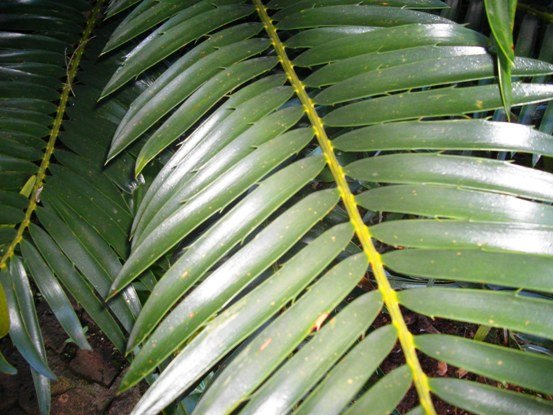Encephalartos lebomboensis leaf

Author: Ivan Lätti
Photographer: Ivan Lätti
Encephalartos lebomboensis has leaves of up to 2 m long. They form a dense crown on a flourishing specimen. The rachis is strongly curved near the leaf tip. The pinnae or leaflets are bright green. They have up to four teeth on both margins in a regular pattern. There are yellow markings at the base where the leaflets join the rachis on the petiolules, the stalks of leaflets.
This cycad species is thought by some to be extinct in nature. Plant collectors and human land users may have removed or destroyed them all. The plant's popularity has given it a brief respite in cultivation and the specialised horticultural market. Other rare plants are not always so lucky to have cultivation method knowledge among the greedy.
The expression "loving someone or something to death" is rather apt in the case of rare plants. Rarity unfortunately causes popularity with collectors. The human need to be special sometimes causes the impulse to own something special. The collecting craze in people sometimes ends in the demise of plant and animal species in nature (Coates Palgrave, 2002; iNaturalist; www.plantzafrica.com).

